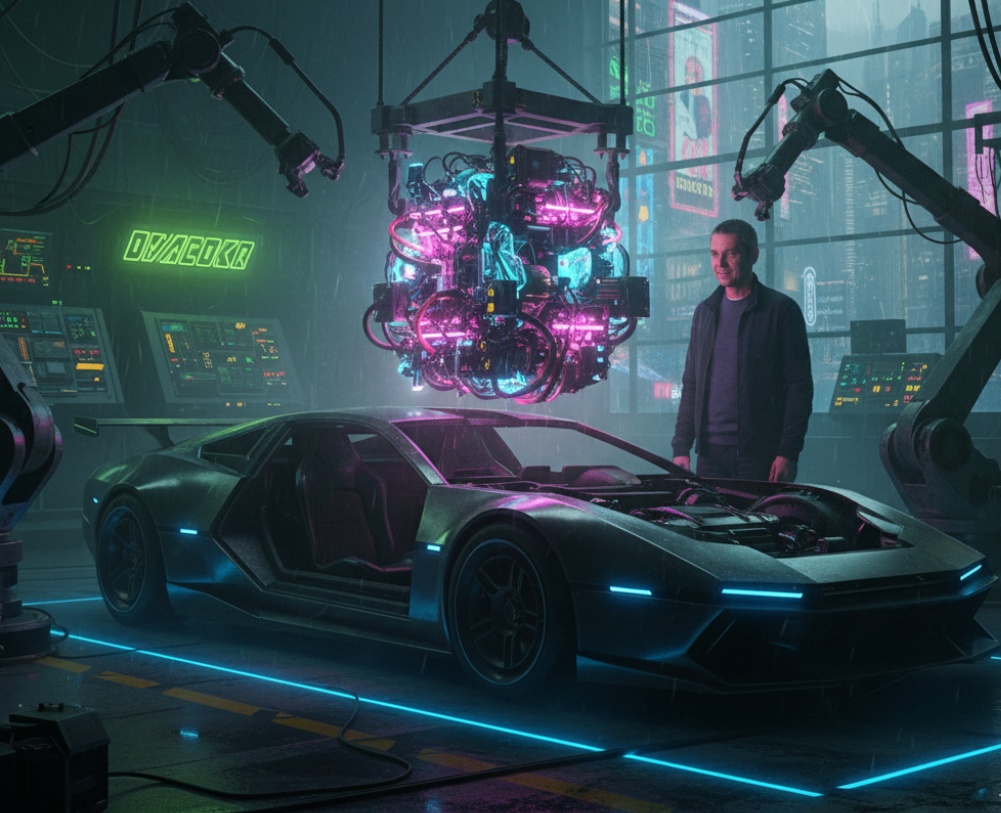The most powerful engine in the world is useless if it stays in the garage.
After my redundancy from AWS, I poured months into a whirlwind of focused obsession, driven by a problem I had witnessed firsthand in global corporations: The AI Productivity Paradox.
Companies were investing heavily in powerful AI, but user adoption had completely stalled. The tools were frustratingly generic, unable to handle the nuanced, multi-step workflows of real experts. Worse, the user experience was a nightmare. People were forced to become digital contortionists, constantly switching tabs, stitching together outputs from different tools, and battling a steep learning curve just to get a mediocre result.
So, I built a blueprint for an engine designed to break that paradox. My goal wasn’t just to build another AI tool; it was to solve the human problem of adoption by tackling the core issues of clunky UIs and generic outputs, all underpinned by an unshakeable foundation of enterprise-grade security and reliability.
I had built an engine. And I knew it was powerful.
But technology alone is never the answer. I needed a partner who lived and breathed the problems it was designed to solve. I needed a driver who knew the road ahead because they had spent decades navigating it.
That’s when I sat down with my friend, Andy Duckett.
When I first opened the laptop, his reaction was priceless. He looked at the screen, then back at me. “This just looks like a Gemini chat,” he said, and he was right. There were no complex menus, no dashboards, no buttons.
And that was the entire point.
I explained that the future of powerful software, as predicted by leaders like Eric Schmidt, was one where the UI becomes obsolete. The innovation isn’t in adding more buttons; it’s in removing them, hiding the complexity so the user can just… work.
What Andy was looking at wasn’t a simple chatbot. It was the deceptively simple cockpit of a powerful, enterprise-grade engine. I showed him how:
- You don’t just ‘start a chat’; you spawn an expert. Every new session creates a dedicated AI Agent for that specific project, with a perfect, persistent memory.
- The system already knows what you’ve told it. I demonstrated how it refuses to let you upload the same document twice. Why? Because it doesn’t need to. It remembers.
- You can switch specialists on the fly. With a simple command, you could activate a new AI persona—a Sourcing Engine, a Market Analyst, a Business Strategist—all within the same, unified space. No switching tabs, no copy-pasting, no juggling different tools.
This was the magic: a system that looked like a consumer-grade assistant but performed like a fleet of enterprise-grade specialists.
Then, for the final reveal, I showed him the integrations. I asked the agent to enrich a report using details from an email in my inbox, and then to analyze my calendar for the week.
He was blown away.
He immediately saw it. The “simple chat” wasn’t a missing feature; it was the most powerful feature of all. He didn’t just see the “Glass Box” architecture or the multi-agent system; he saw a solution. He translated my technical blueprints into real-world value, articulating how each component solved the daily frustrations of recruitment leaders.
He saw how the engine could be used to build a world-class vehicle for the recruitment industry.
It was the missing piece. My deep, hands-on understanding of the AI platform combined with his two decades of market expertise was the perfect synergy.
We both knew this was more than just a good idea. This had to be a business.

